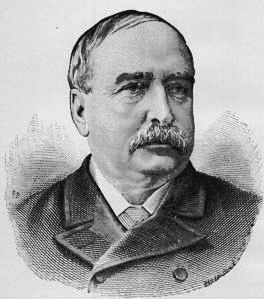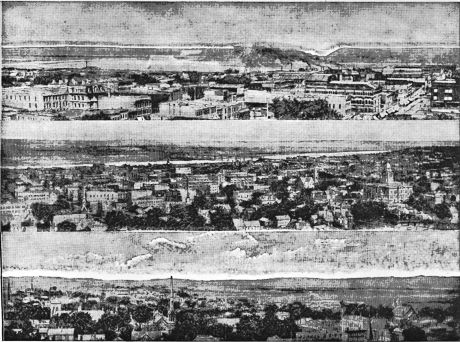|
OMAHA
ILLUSTRATED.
year 1846, crossed the State of Iowa, and
made Council Bluffs one of their principal halting places.
The place was at first called "Miller's Hill" by some, and
"Miller's Hollow" by others, after a Mormon elder named
Miller. The name was soon changed to "Kanesville," in honor
of Colonel Thomas L. Kane, a brother of the famous Arctic
explorer. When the President called for volunteers for the
Mexican war, in 1846, the Mormons responded by organizing a
battalion, which crossed the plains to California. Colonel
Kane organized this battalion for the Mormons, and became
quite popular with them. In 1853, however, the
|
[But very few
men have been identified with the life and growth
of Omaha so actively and efficiently as Dr. George
L. Miller. He was one of the pioneers, coming to
the then straggling and struggling village of
Omaha, in October, 1854. Dr. Miller was born in
Boonville, Oneida county, New York, July 1, 1831.
At the age of seventeen he began the study of
medicine at Syracuse, and after five years of
office study, went to New York and entered the
College of Physicians and Surgeons, from which he
graduated in
|
|
1852- He practiced his profession for two years
after his return to Syracuse, but determined to try
the West, and there carve out a name and fortune.
He came to Omaha long in advance of the railroads,
when stage coaching to St. Joseph, Mo., was about
the only means of communication with the outside
world. Here he began the practice of medicine. But
people were few in those early days, and patients
scarcer still, and the hardships of frontier life
were many. He entered politics a year after his
arrival in Omaha, and was elected to the
Territorial Council. He served three terms in that
body, during the last as its presiding officer. In
1860, in the hope of bettering his fortune, he
removed to St. Joseph, and while waiting for a
practice, turned his attention to literary work.
Those were exciting days, on the eve of the
rebellion, and Dr. Mil-
|

DR. GEORGE L. MILLER.
|
ler's editorials in the St. Joseph Gazette
attracted such commendatory attention, that he was
almost moved to the adoption of journalism as a
permanent pursuit. But in 1861 he secured the
position of sutler at Fort Kearney, and remained
there until 1864, when he returned to Omaha, and
became the Democratic candidate for Congress, and
was defeated. In 1865, Dr. Miller established the
Omaha Herald, and continued to be its editor until
March 1, 1887. With his pen he did invaluable
service for Omaha and Nebraska.He toiled
ceaselessly and vigorously for the up-building of
the city and State. He is a powerful writer, a deep
thinker, and fearless in the expression of his
views. His strong mentality and prime abilities
commanded for him respect abroad as well as at
home. In the national councils of the Democratic
party no man
|
|
from the West has ranked higher. He is a master
of political strategy, and so sound in finance,
government, and the other components of political
economy, as to rank with the statesmen of the day.
Indeed he has been the familiar associate of the
leading men of the nation; Horatio Seymour and
Samuel J. Tilden having repeatedly conferred upon
him distinguished evidences of their regard and
confidence in his abilities, Dr. Miller has never
had any penchant for office. When President
Cleveland was elected, he was very strongly urged
by leading men all over the country for a Cabinet
position, but outside of the distinguishment, the
place had no attractions, and he was well contented
when another was chosen. Since his retirement from
journalism, Dr. Miller has been enjoying the
competency which his toil amassed, though still
clinging to his identity with Omaha, among whose
citizens he enjoys a well-deserved
respect.]
|
name of Kanesville was changed to
"Council Bluffs." By this time the place had become an
important point, owing to the Mormon immigration, which was
very large during the summer season for several years. In
addition to this there was the California travel, caused by
the gold discoveries. At about the same time that the
Mormons made Council Bluffs a halting place they established
what they called "Winter Quarters," on the west side of the
Missouri river, on the site of the present village of
Florence, six miles north of Omaha. The land at that time,
in the year 1846, belonged to the Omaha Indians, with whom
the Mormons established freindly (sic) relations, and made
an agreement by which they leased from the Indians for two
years sufficient land for their purposes. In less than three
months, seven hundred buildings were
[2]
|



